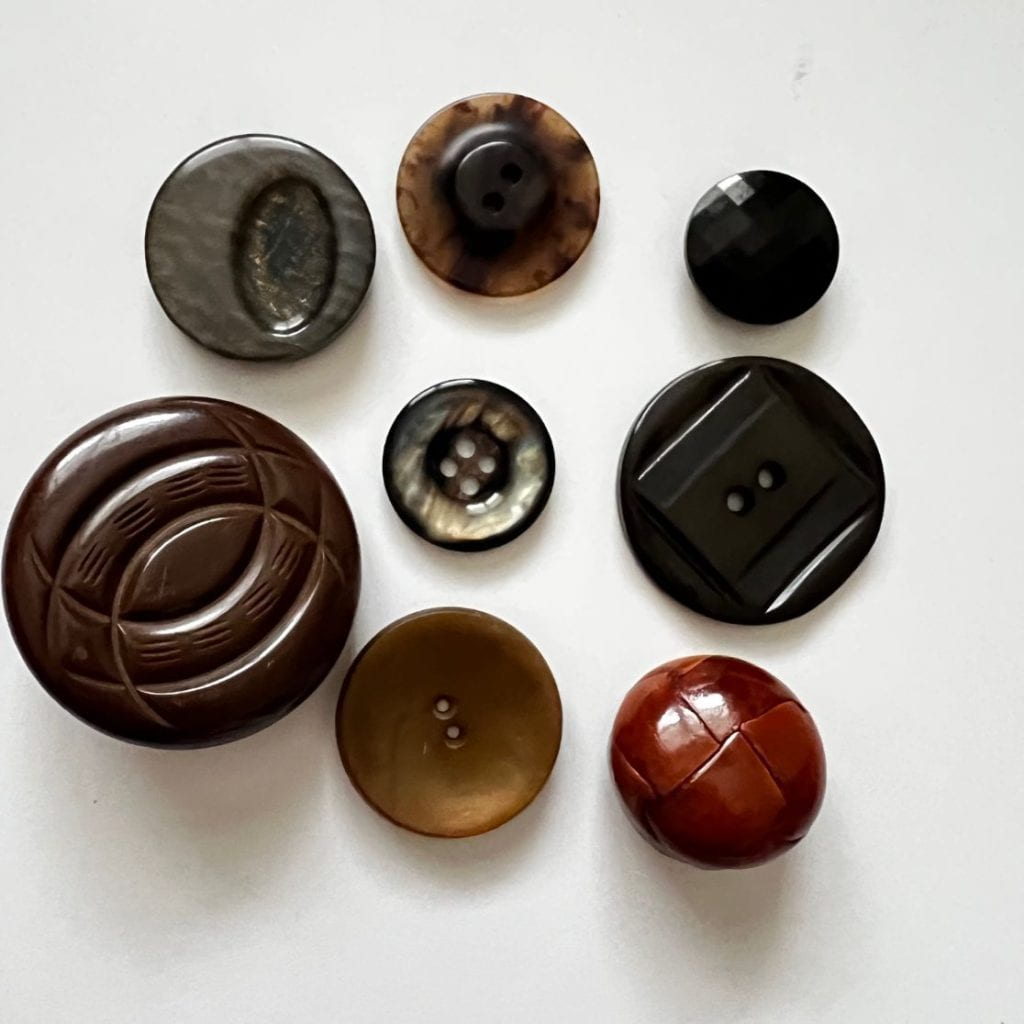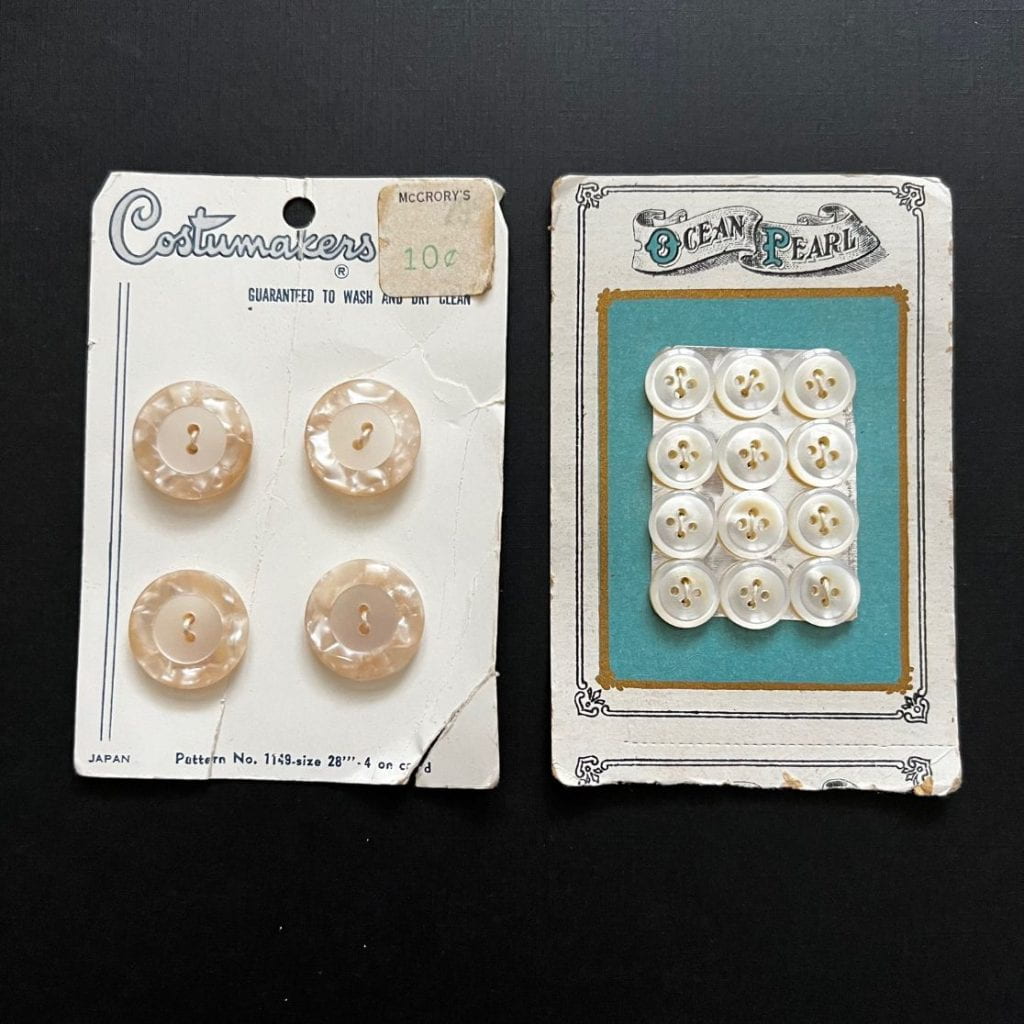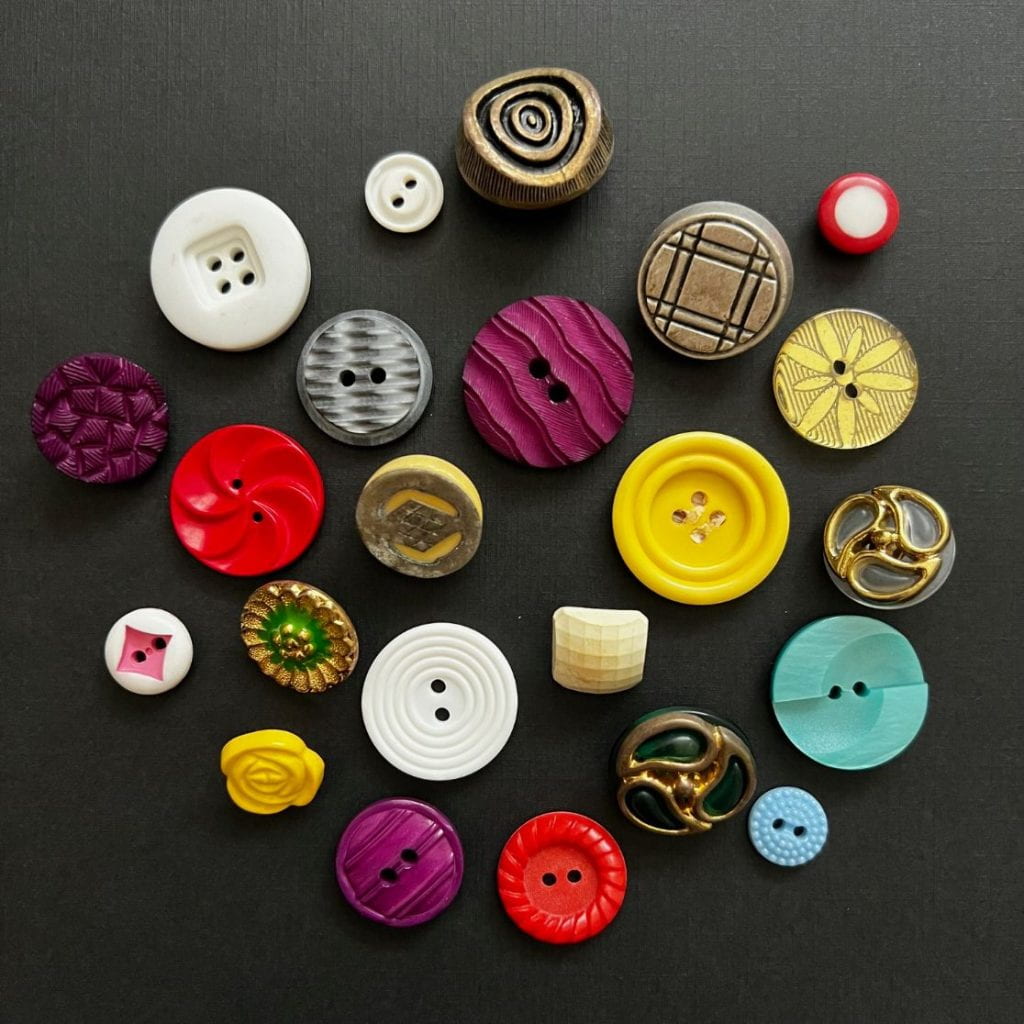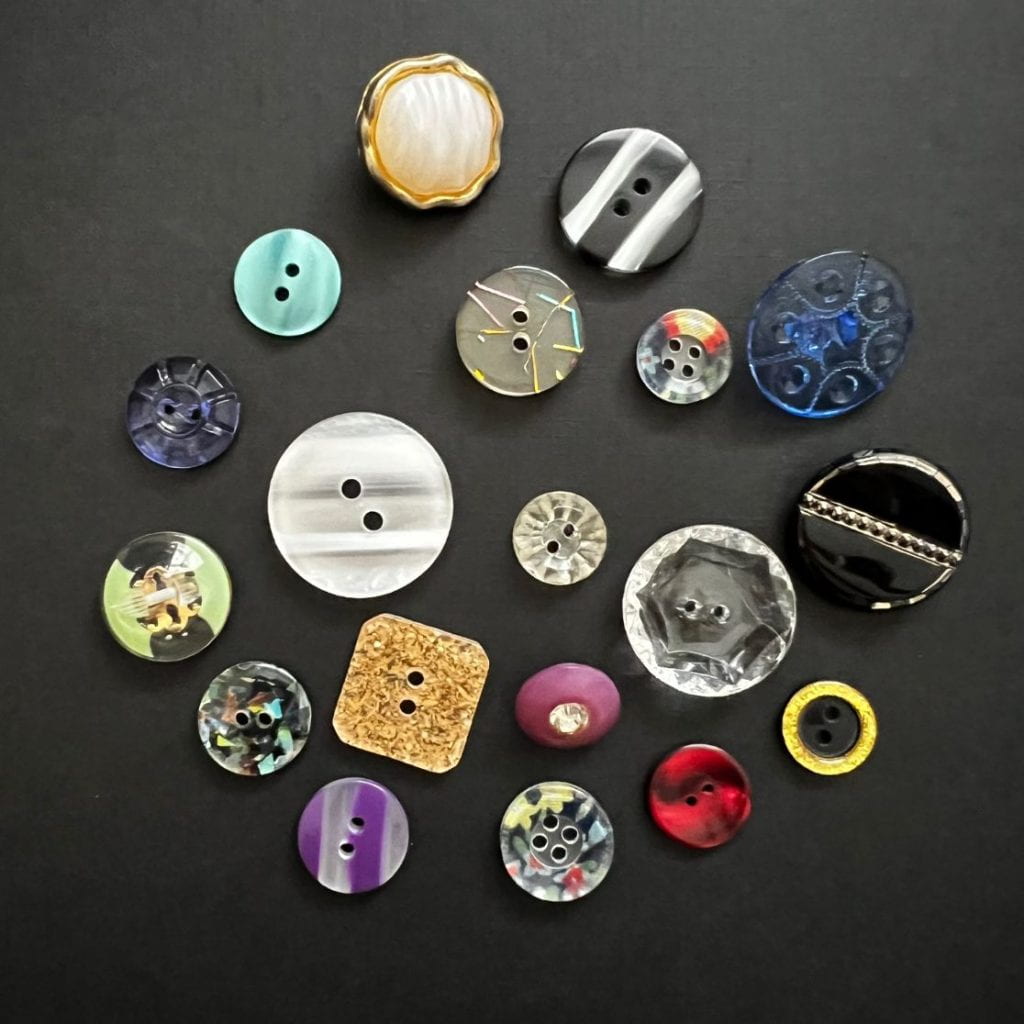Vintage Buttons
On a recent post, I shared how I have been restoring linens and doilies. I also inherited my grandmother’s sewing box filled with all kinds of novelties, including buttons. They are little pieces of art, and I was curious about their history. Studying buttons is a multidisciplinary exploration, connecting history, art, math, and science (button material and construction.) What do you know about buttons?
Some Fun Facts
Buttons were originally used for decoration, not fastening. Until the 19th century, buttons were found primarily on men’s clothing. Women’s clothes were fastened with laces and hooks and eyes. Wearing decorative buttons was seen as a sign of prosperity.
Through history, buttons were made of fabric, bone, metal, glass, horn, painted enamel, wood, celluloid (the first plastic), ceramic, ivory, and shells!
Buttons remain the best-selling fastener and are preferred over zippers.
The National Button Society was founded in 1938.
I am learning, but I think these are some of my oldest buttons. Buttons were so valuable that when a garment wore out, the owner would cut off the buttons and save them.
These buttons are twentieth century. Zoom in and look at the patterns! Note the colors and geometric designs.

Watch full screen here.
For a deep dive into button history, check out this video from a button museum. Go here to view full screen.
Children will enjoy sorting and classifying buttons by attributes such as color, size, shape, and number of holes. Count your sets and compare using math terms like more and less. Add the sets of buttons together.
Teach your child how to sew a button onto a piece of fabric. Such a great life skill! For your youngest learners, place articles of clothing on a table with various sizes of buttons and task them with buttoning and unbuttoning them to develop fine motor and self-help skills.
Corduroy, a classic tale, recounts how a small toy bear loses a button off his overalls and searches for a new one. Use it as a mentor book for identifying story structure – characters, setting, problem, and resolution. Go here to view full screen.




